Cooking an omelet may seem simple, but it’s also one of those deceptively simple dishes that’s easy to mess up.
These hacks took me years (and several pan disasters) to learn, but now I wouldn’t flip an omelet without them.
1. Whisk Eggs With A Splash Of Water
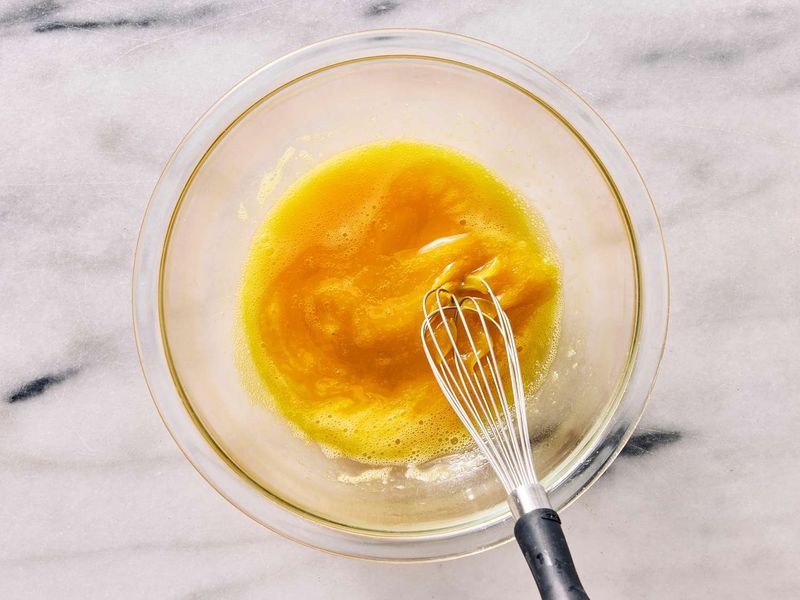
Just a tablespoon of water turns scrambled eggs into a fluffy cloud when cooked. The steam helps the mixture puff up gently, giving the omelet a light, almost soufflé-like texture.
I used to add milk, but water gives better lift and zero heaviness. Stir until you see tiny bubbles form.
2. Use A Nonstick Pan With A Silicone Spatula

A good nonstick skillet is like an omelet’s best friend—it lets you slide, fold, and flip without heartbreak. I always reach for my smallest silicone spatula, the one that bends just right around the edges.
It glides under without tearing anything. And cleanup becomes almost unnecessary.
3. Keep The Heat Low And Steady
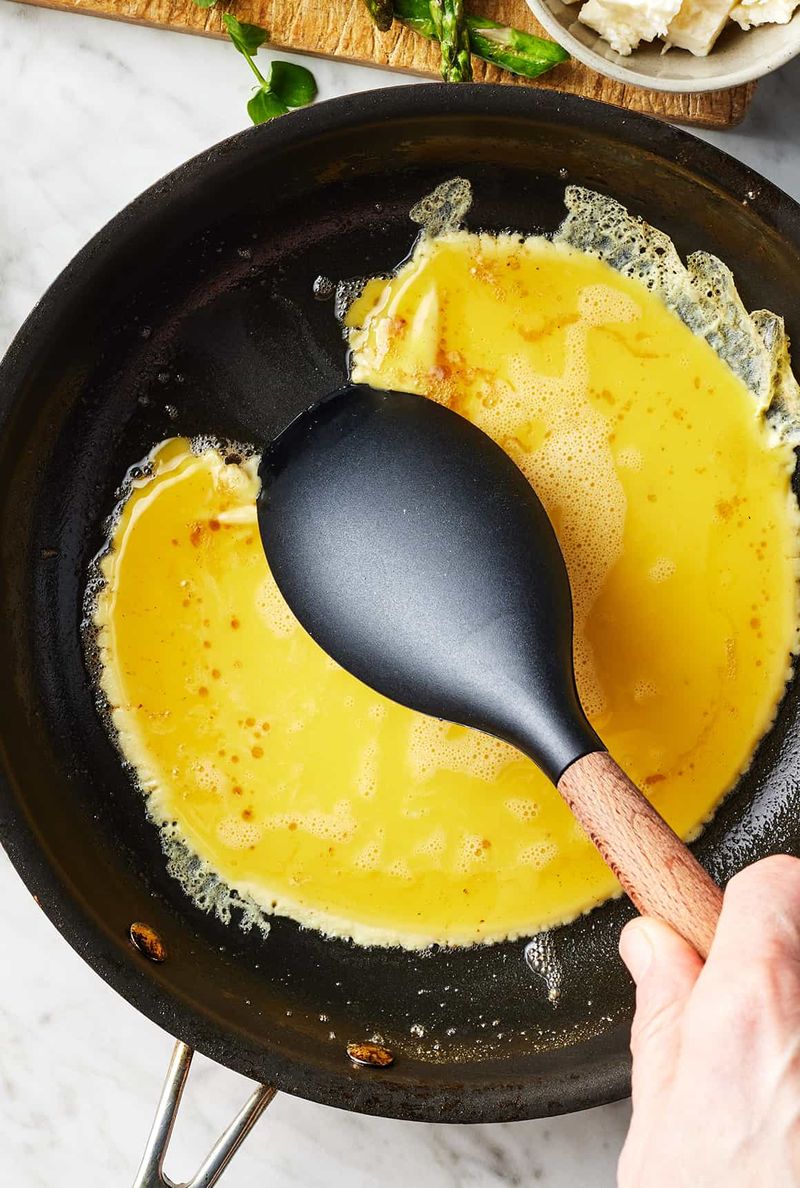
Cranking the heat just gives you browned, rubbery eggs with no personality. Gentle warmth allows the eggs to set slowly and evenly.
I used to cook my omlets over high heat and always ended up with something closer to a pancake than an omelet. Patience tastes better in the long run.
4. Pre-Cook Wet Ingredients Like Tomatoes And Spinach

Dumping raw, watery veggies into your eggs is a recipe for sogginess. I sauté spinach, mushrooms, or juicy tomatoes separately, letting them release their moisture before they hit the pan.
That way, nothing leaks into the omelet. The result? A clean fold and bright flavor.
5. Add Cheese At The Very End
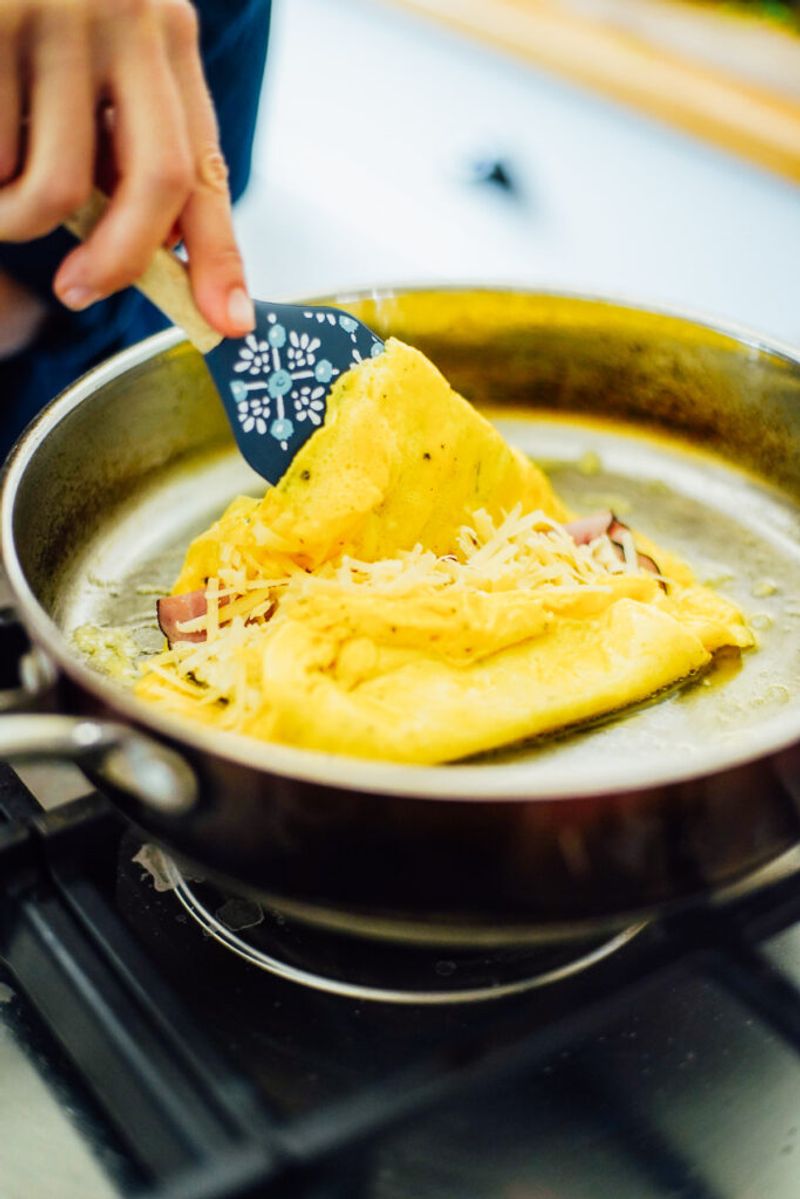
Melting cheese too early means it disappears into the eggs before it can shine. I sprinkle it on just before folding, so the heat seals it inside like molten treasure.
A sharp cheddar or creamy goat cheese works wonders. You’ll taste the difference with every bite.
6. Fold Instead Of Rolling For Even Cooking
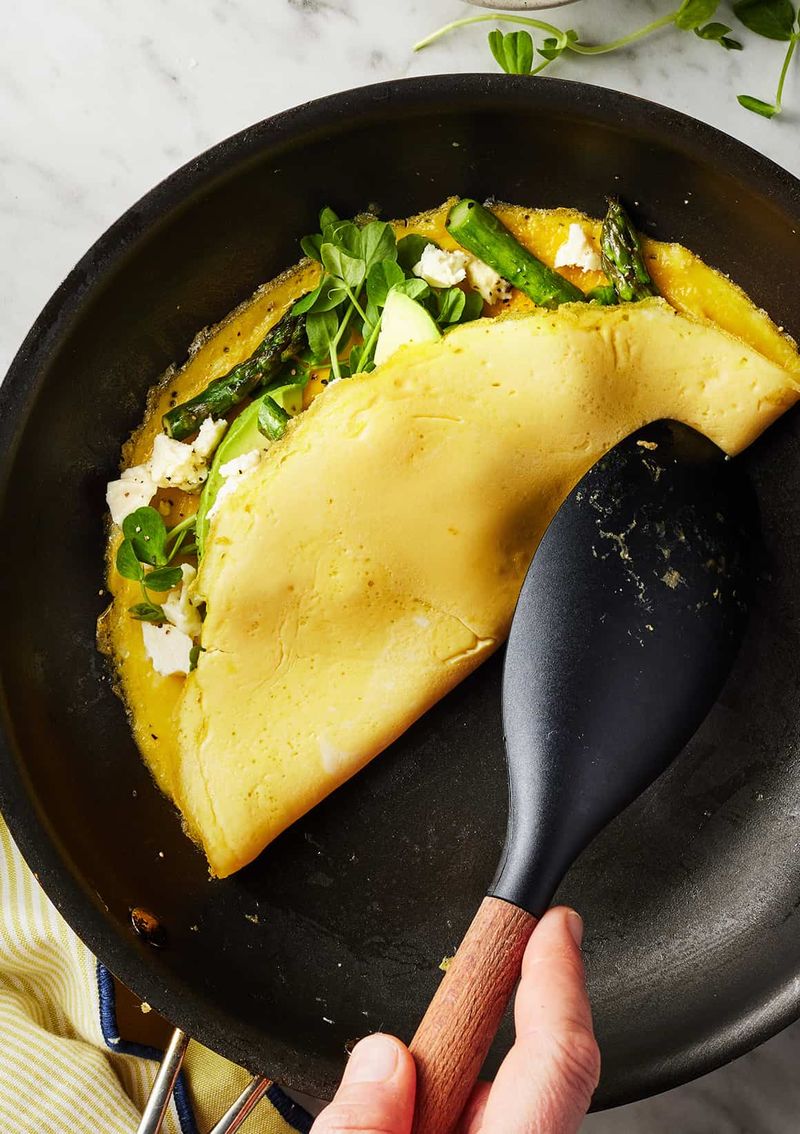
Rolling might look fancy, but it often leaves the center undercooked. A simple half-moon fold creates layers of flavor without making things fussy.
I press gently with the spatula to seal the edges. It’s like tucking the omelet into its own delicious blanket.
7. Separate Eggs For Extra Fluffiness

Whipping the egg whites before mixing them back in adds volume you wouldn’t believe. The texture reminds me of diner-style omelets—airy but still rich.
I reserve this move for special mornings when I want something extra comforting. It’s a small step that delivers big wow.
8. Use A Lid To Steam The Top
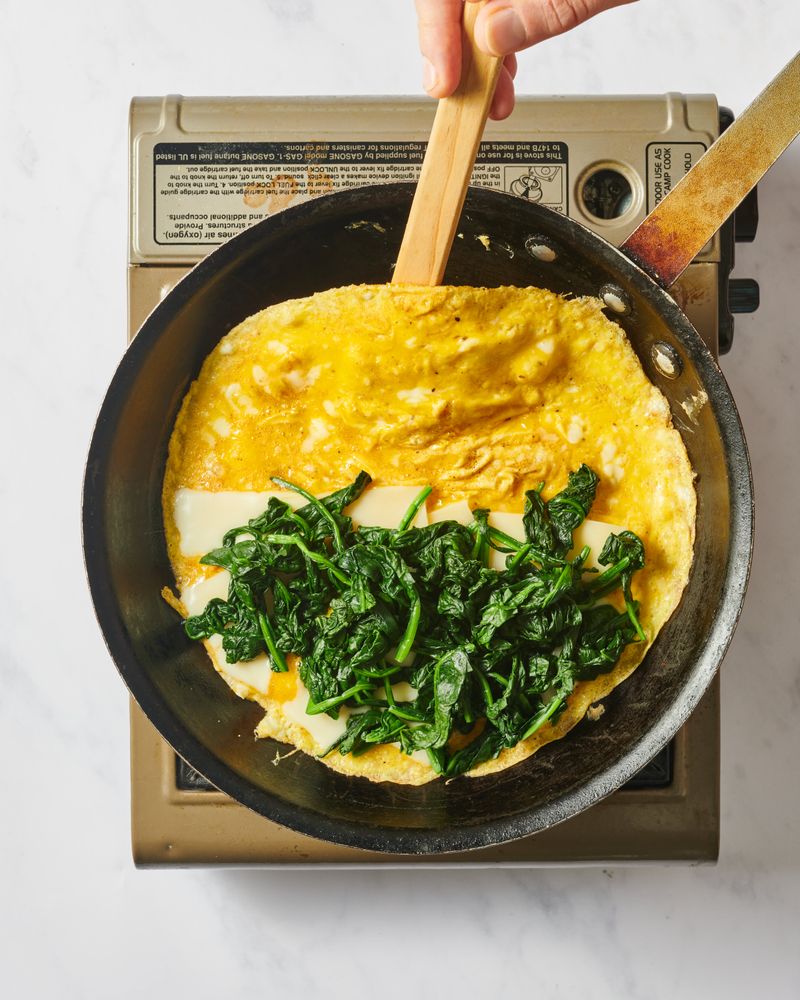
Covering the pan traps just enough heat to gently cook the top without flipping. I learned this from a friend who never dared to turn her omelets—and hers were always perfect.
It’s a trick that locks in moisture and keeps the surface silky. No more raw patches.
9. Avoid Overstuffing With Fillings

It’s tempting to pile in all your favorite ingredients, but too much weight breaks the fold. I’ve had many omelets fall apart mid-flip because I got greedy with bacon.
Keep it simple: two or three accents max. That way, the eggs stay the star.
10. Mix In Fresh Herbs Before Cooking

Chopped parsley, dill, or chives mixed into the eggs infuse every bite with fresh flavor. I used to only garnish, but now I stir them in for extra depth.
It adds color too, like spring sprinkled inside your breakfast. Just chop them fine so they blend in smoothly.
11. Try Using Leftovers As Fillings

Cold roasted veggies, last night’s chicken, or even yesterday’s taco meat can transform an omelet fast. I warm them briefly in the pan before pouring in the eggs.
It’s become my favorite rescue mission for fridge scraps. Some of my best omelets weren’t planned at all.
12. Finish Under The Broiler For A Golden Top

Want a golden top on your omelet? A quick blast under the broiler gives the surface a gentle bronzing without overcooking the base.
I use this trick when I want to impress without fussing. It adds a touch of restaurant polish. Just don’t walk away—it only takes a minute to burn.
13. Cook With Butter For Richer Flavor

Oil works, but butter gives the eggs that classic, comforting warmth. I swirl in just enough to coat the pan and catch that nutty smell.
You don’t need much. Just enough to make the eggs feel special. It’s like a hug in a skillet.
14. Grate Veggies For Faster Cooking
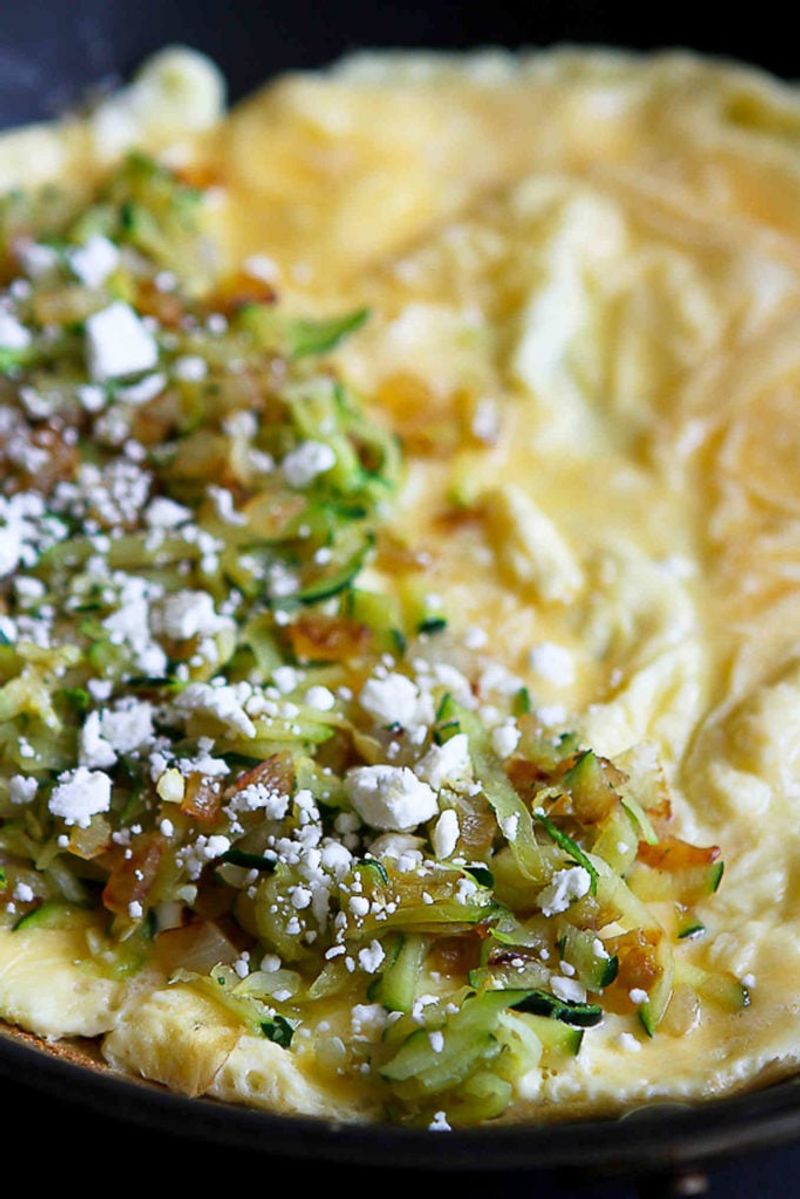
Hard vegetables like carrots or zucchini take forever to soften unless you grate them. I sprinkle the shreds straight into the eggs or cook them down first, depending on the vibe.
They melt right in and add subtle sweetness. Bonus: they’re practically invisible to picky eaters.
15. Use Two Eggs For The Perfect Single-Serve Size

Three often overwhelms the pan and your plate, but one feels too small. Two is the sweet spot for even cooking, fast flips, and just the right amount of richness.
I always feel satisfied without feeling stuffed. It’s a portion that makes sense.
16. Rest The Omelet For A Minute Before Serving
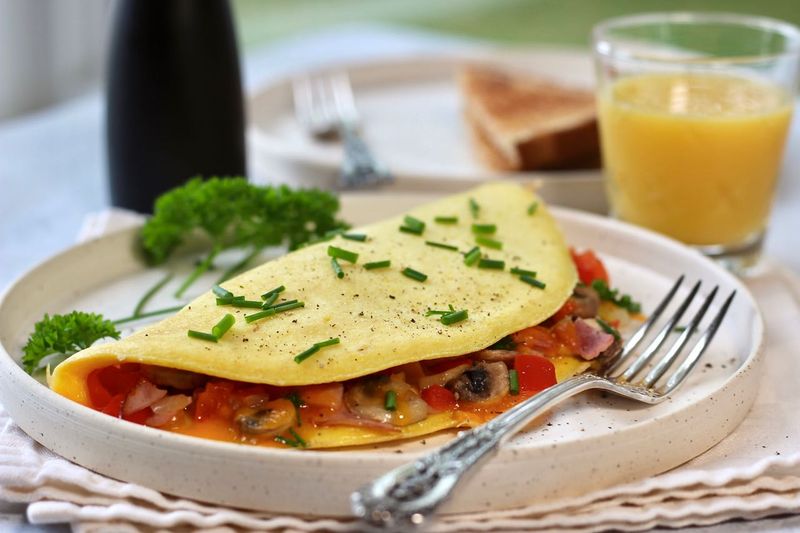
Just like meat, an omelet needs a pause before cutting. That little wait firms up the texture and lets steam settle.
I plate it, take a deep breath, and maybe sprinkle some extra herbs while it rests. The reward? A bite that holds together like a dream.

